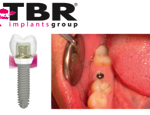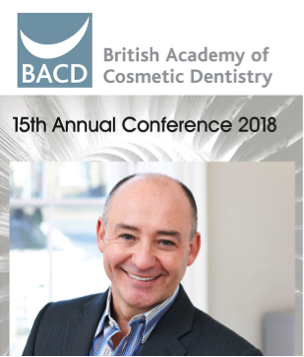Dental implant treatment has become increasingly popular, as it can offer a reliable solution to partially or fully edentulous patients. Although implants have high success rates in the majority of cases, they can fail and often this is a result of poor treatment planning. As such, it is essential for practitioners to employ a rigorous and systematic approach to initial assessments in order to determine if a patient is suitable for dental implants. Not only will this ensure that treatment is successful, but also that the patient’s expectations are well met or managed.
Health status
Most practitioners understand that any future complications can be avoided by identifying potential risk factors for implant failure. Prior to treatment, the patient’s current medical and dental status should be evaluated – including systemic conditions, medications, behavioural habits (e.g. smoking), and the patient’s periodontal condition.
Systemic diseases, such as poorly-controlled diabetes or osteoporosis, are risk factors that will need to be discussed with the patient, as these conditions can severely compromise healing post-implant placement.[i]Similarly, the occurrence and severity of infections such as periodontal disease or other pathologies of the oral cavity will need to be analysed, to determine if the patient is an appropriate candidate for dental implants. Patients with a history of untreated periodontitis are at risk of implant failure and as such, any periodontal diseases must be properly controlled and maintained prior to surgery.[ii]
Behavioural conditions that may interfere with treatment and follow-up care include tobacco use, substance abuse, and parafunctional habits (e.g. bruxing and clenching). Tooth grinding could place unnecessary strain on the implant thereby causing components to fracture, while excessive smoking could impair healing, as the nicotine typically found in tobacco products reduces blood flow, thus increasing the incidence of peri-implantitis.[iii]As such, smoking cessation may be advisable, particularly for patients suffering from immunodeficiency conditions.
Demands, expectations and compliance
Practitioners cannot underestimate the importance of discussing the demands and expectations of the patient, as this will influence the patient’s overall satisfaction of implant treatment following its completion. Their demands should be balanced with the objective evaluation of their condition and the proposed treatment outcomes. If the patient’s expectations are unrealistic, then they will deem treatment a failure – regardless of whether you believe it is, in fact, clinically successful. Therefore, communicating effectively is essential to ensuring that the proposed treatment plan is fully understood by the patient.
As part of initial assessments, practitioners should look at the patient’s compliance with past and current preventive care in order to determine whether the patient is likely to be compliant towards advice and guidance provided. As it has already been established, effective healing is crucial for the success of an implant, so patients must be made aware of their responsibilities to maintain good oral hygiene, which is key to avoiding the build up of plaque and preventing the development of complications such as peri-implantitis.[iv],[v]
Intraoral and extraoral examinations
The patient’s mouth opening should be assessed during consultations, as clinicians will need sufficient access to the surgical site during implant placement. Various characteristics such as the patient’s smile line, lip line, and facial midline should also be evaluated, particularly in cases where implants are placed in the aesthetic zone – an area in which visual outcomes tend to be the patient’s overriding concern.
One of the primary factors determining the long-term success of an implant is the bone in which it is placed, so examinations should confirm that there is sufficient bone quantity and quality in the area for implant placement.[vi]This will involve evaluating the shape of the bone, as well as the bone width and height. The patient’s bone density will also need to be examined from radiographs and CT scans. Some patients may require more advanced procedures such as bone grafting, which can ensure they have adequate bone quality and quantity.
Based on these extraoral and intraoral examinations, practitioners can then select the most appropriate implant solution for the patient. The key here is to choose an implant system that is proven to deliver long-lasting aesthetics and function. TBR’s Z1 implant system, for instance, combines the biocompatibility of titanium and zirconia in one seamless component, which is available in different lengths and diameters to enable practitioners to place the implant in both anterior and posterior regions.
Although there are various elements to consider, planning appropriately and following proper case selection protocols is crucial to ensuring patients are deemed suitable for implant treatment. By doing this, practitioners can avoid the risk of failure and achieve highly satisfactory results that meet, or even exceed patients’ expectations.
For more information on the Z1 implant, visit z1implants.co.uk and to learn about the full range of implants from TBR, visit tbr.dental, email support@denkauk.comor call 0800 707 6212
REFERENCES
[i]Chen, H., Liu, N., Xu, X., Qu, X., & Lu, E. (2013) Smoking, Radiotherapy, Diabetes and Osteoporosis as Risk Factors for Dental Implant Failure: A Meta-Analysis. PLoS ONE. 8(8): e71955. Link: http://doi.org/10.1371/journal.pone.0071955. [Last accessed: 20.06.18].
[ii]Stacchi, C., Berton, F., Perinetti, G., Frassetto, A., Lombardi, T., Khoury, A., … Di Lenarda, R. (2016) Risk Factors for Peri-Implantitis: Effect of History of Periodontal Disease and Smoking Habits. A Systematic Review and Meta-Analysis. Journal of Oral & Maxillofacial Research. 7(3): e3. Link: http://doi.org/10.5037/jomr.2016.7303. [Last accessed: 20.06.18].
[iii]Malhotra, R., Kapoor, A., Grover, V. and Kaushal, S. (2010) Nicotine and periodontal tissues. Journal of Indian Society of Periodontology. 14(1): 72-79. Link: http://doi.org/10.4103/0972-124X.65442. [Last accessed: 20.06.18].
[iv]Elias, C. N. (2011) Factors Affecting the Success of Dental Implants, Implant Dentistry – A Rapidly Evolving Practice. Link: http://cdn.intechweb.org/pdfs/18426.pdf. [Last accessed: 20.06.18].
[v]Ramanauskaite, A., & Tervonen, T. (2016) The Efficacy of Supportive Peri-Implant Therapies in Preventing Peri-Implantitis and Implant Loss: A Systematic Review of the Literature. Journal of Oral & Maxillofacial Research. 7(3), e12. Link: http://doi.org/10.5037/jomr.2016.7312. [Last accessed: 20.06.18].
Author:

Mr Luc Trevisan is a biomedical engineer. He has been the TBR Development Director since 2007















